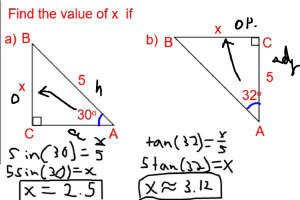Using Online Whiteboards to Boost Student Engagement and Confidence in Math
Two teachers who had students use individual dry-erase boards in the classroom have switched to online whiteboards—a change they plan to keep.
Your content has been saved!
Go to My Saved Content.Imagine if you could ask a question in class and immediately get a response from every student. Understanding what students are thinking is one of the greatest challenges for experienced math teachers. In this article, we discuss ways that we can better grasp a student’s thought process in math class by using online whiteboards—web-based tools that enable students to write or type content that teachers can instantly see and share.
Student Feedback and Dry-Erase Boards
One of our favorite ways to get feedback from students is to have them answer questions on dry-erase boards. We show one problem at a time using our classroom projector, and students work in groups to write their solutions on their boards. After a few minutes, they hold up their boards simultaneously so that they can see one another’s answers. After a brief discussion, we move on to the next question.
Students enjoy using dry-erase boards because they build students’ mathematical confidence when they work collaboratively. We like getting more information about student thinking than we would if we questioned one student at a time.
Unfortunately, dry-erase boards have several disadvantages. They’re small, so many students have difficulty seeing each other’s work. Since students erase their boards after every question, their work can’t be saved easily. Boards and dry-erase markers also must be cleaned, and replaced when they get worn.
Additionally, when the pandemic forced us to switch to remote learning, we couldn’t see what students were doing. Most of our students don’t turn on their microphones or cameras. Even if they did, we would see only their faces, not their work.
How Online Whiteboards Work
The solution is online whiteboards. Over the last few months, we found that when we incorporated online whiteboards into our teaching, student engagement was similar to, if not better than, what we experienced in person. To view and manage student content, teachers log on to a whiteboard website such as Google Jamboard, Whiteboard.fi, Whiteboard.chat, GeoGebra, or Desmos, which are all free, although some have paid features, and create a session or activity. (Many sites also have premade templates that teachers can modify.) Students then access content by going to the whiteboard site and typing a code or clicking a unique link. Many sites allow teachers to assign content directly to their classes via a learning management system like Canvas or Google Classroom.
The teacher views of whiteboard sites are especially useful because they enable us to see all of the students’ whiteboards simultaneously. As a result, we can comment on students’ work almost immediately. This not only allows us to keep our students engaged but also helps us reach all students, especially the ones who don’t normally speak up.
The simplest way we use online whiteboards is to give students blank whiteboards on which they can write content. This strategy works best for situations where we survey students with quick questions like “Which answer choice is correct?” or “What is a ratio?”
A more sophisticated technique is to give students static content that we prepare beforehand. Pushing text and diagrams directly to their whiteboards works well for practice since they can mark up diagrams and underline text, as shown below.

Interactive, Independent Learning
Two online whiteboards, GeoGebra and Desmos, deserve special mention because they allow students to create and manipulate animations. Students can move sliders or other controls to see how they affect mathematical phenomena, such as the area of a triangle. In addition, with GeoGebra and Desmos, students can type a wide range of mathematical symbols and use built-in calculators. Both sites provide many free premade activities that teachers can customize so that they don’t have to start from scratch.
We especially like the Desmos activities for several reasons. They’re divided into slides, so we can control what fits on a screen and pace our lessons. The teacher dashboard enables us to view student progress, write comments, and share student work. Desmos card sorts help students build vocabulary by linking mathematical terms with their definitions and pictures. Desmos’s powerful built-in scripting language allows us to change slide content based on students’ entries. For example, slides can automatically check answers or graph equations typed by students.
Online whiteboards have some limitations—students must run two applications, one for the online meeting and one for the online whiteboard. Depending on the device they use or the quality of their internet connection, some students may struggle to keep up with the lesson. We also have to teach students how to type mathematical content.
Despite these drawbacks, online whiteboards have improved student engagement so much that they’re worth the extra effort. Even when we resume teaching in person, we plan to continue using them. Online whiteboards can reduce the need to make copies, cut out cards, and prepare other handouts. Being able to see all students’ work simultaneously helps us quickly identify who’s struggling so that we can walk over to help them. In short, we believe that online whiteboards—whether used for quick feedback, regular practice, or hands-on individual discovery—are here to stay.
